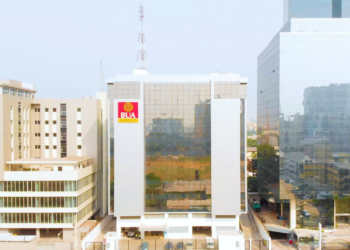Nigeria’s fixed-income market recorded mixed performance, with total traded value moderating slightly to N89.14 trillion on Friday, October 17, 2025, from N89.34 trillion a week earlier.
Data from the FMDQ Securities Exchange showed that trading activities remained steady across Treasury bills, Open Market Operation (OMO) bills, and Federal Government bonds as investors sought a balance between short-term safety and long-term yield opportunities.
Analysts attributed the mild N200 billion dip to profit-taking after earlier yield gains and cautious repositioning ahead of the Central Bank of Nigeria’s (CBN) next monetary policy signals by mid-November.
Despite the small decline, the market remained resilient, reflecting a strong investor’s appetite for stable, government-backed instruments in an environment of moderating inflation and tight liquidity.
Treasury Bills remain attractive despite minor rate Changes
The Treasury bills market continued to draw investor interest due to its relative safety and steady returns.
- The 6-November-2025 T-bill closed with a rate of 16.47% and a yield of 16.62%, dipping slightly by 0.01%.
- Likewise, the 4-December-2025 paper recorded a yield of 17.56%, also down 0.01%. Mid-tenor bills showed modest gains, with the 9-July-2026 and 6-August-2026 bills rising by 0.22% and 0.24% to 17.74% and 17.85% respectively, while the 8-October-2026 bill advanced to 18.12%, up by 0.11%.
During the week, yields generally softened after a prior rally, suggesting that investors were comfortable with current yield levels.
The 8-January-2026 T-bill, for example, settled at 16.38% compared to 16.44% previously, while the 9-April-2026 eased to 17.37%.
Market analysts explained that the slight rate movements reflect a stabilizing environment, as inflation cooled to 18.02% in September from 20.12% in August.
This has given investors more confidence to hold short-term securities that still deliver returns above inflation.
OMO Bills rise as CBN market liquidity
OMO bills saw renewed activity, with yields rising across most maturities as the CBN continued to tighten system liquidity. The OMO 4-November-2025 closed at 20.67%, while the OMO 2-December-2025 climbed 0.53% to 23.58%. Similarly, the OMO 14-April-2026 gained 0.48% to 20.59%, and the OMO 7-July-2026 rose 0.44% to 19.31%.
The upward adjustment in OMO yields reflects the apex bank’s continued effort to control money supply and curb inflationary pressures. Higher OMO rates have also attracted more foreign portfolio investors, who are drawn by the competitive returns in the Nigerian fixed-income space.
Overall, the OMO segment contributed significantly to total traded value, highlighting investor preference for high-yield short-term assets. Analysts noted that these instruments remain key tools for liquidity management, particularly as the CBN maintains a tight monetary stance to stabilize the naira.
Bond market records mixed results as yields flatten
Federal Government bonds traded in a narrow range as the market settled into a wait-and-see mode. The 16.2884% FGN March 2027 bond closed flat at a yield of 16.02%, while the 19.89% FGN May 2033 remained steady at 16.11%.
However, the 12.1493% FGN July 2034, 19.00 Feb-2034 dipped slightly by 0.05% to 15.67%, 1568% respectively, while the 14.80% FGN April 2049 bond inched up 0.10% to 15.57%.
This flattening of the yield curve, according to analysts, shows that investors expect interest rates to remain stable in the short term. Long-dated papers such as the 12.98% March 2050 and 15.70% June 2053 held firm at yields of 15.46% and 15.40%, respectively.
The bond futures market also stayed resilient, with the 10-year June 2026 contract closing at N130.38, signaling confidence in long-term stability.
In the money market, the Open Repo (OPR) rate edged up to 24.54%, while the Overnight (O/N) rate rose to 25.07%.
Analysts expect the market to remain steady in the coming weeks as investors consolidate positions ahead of fresh policy cues.




















